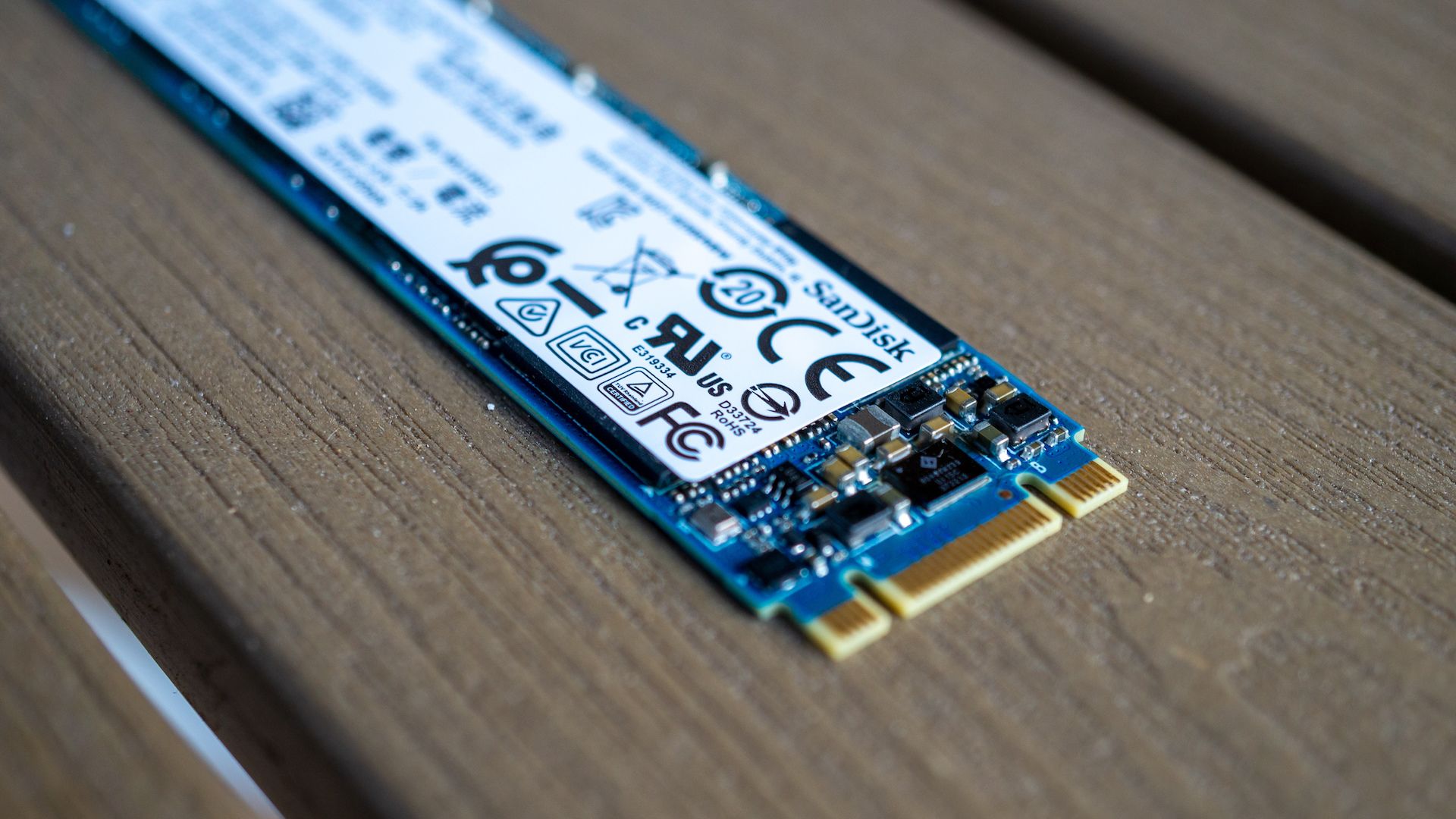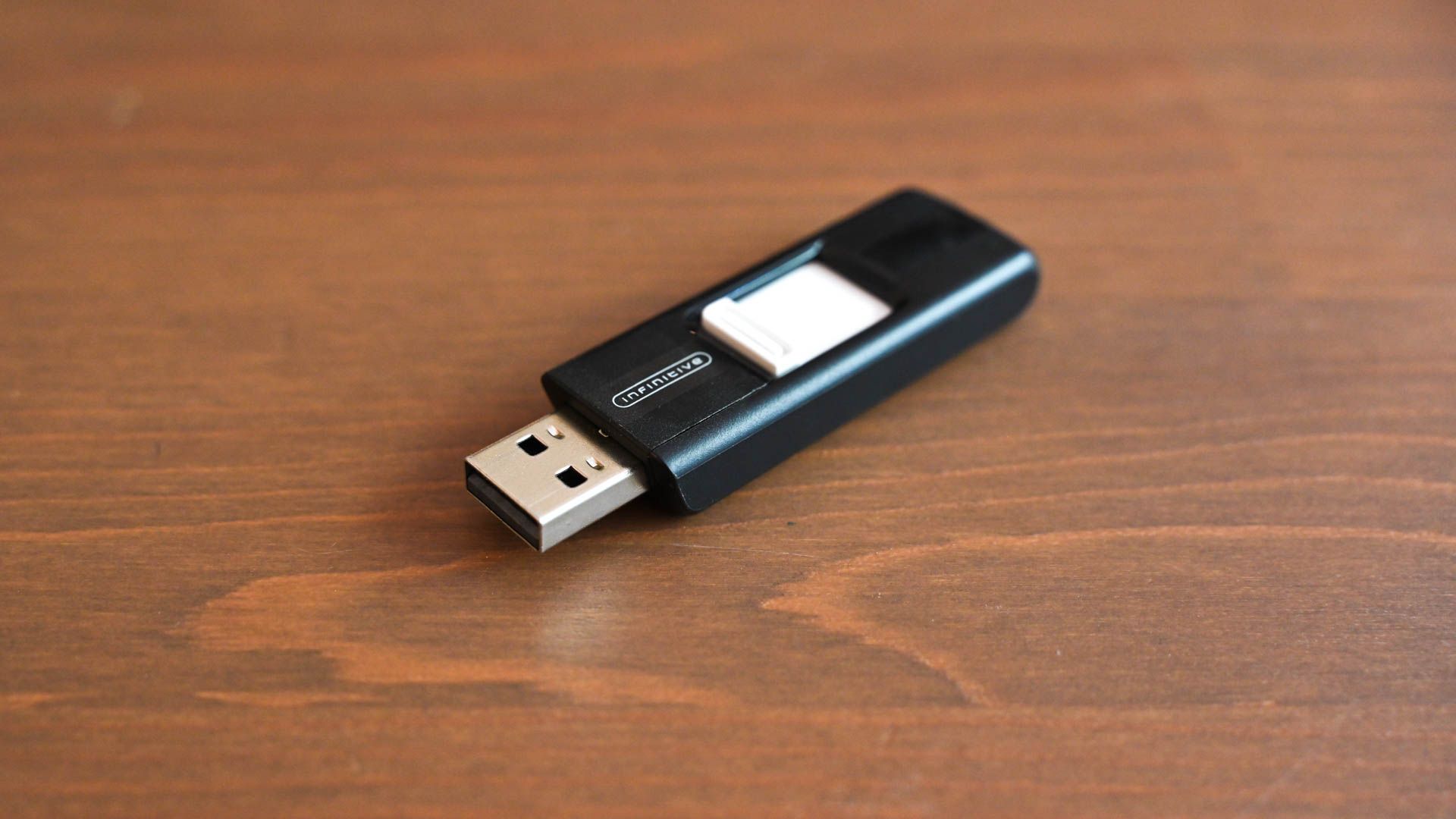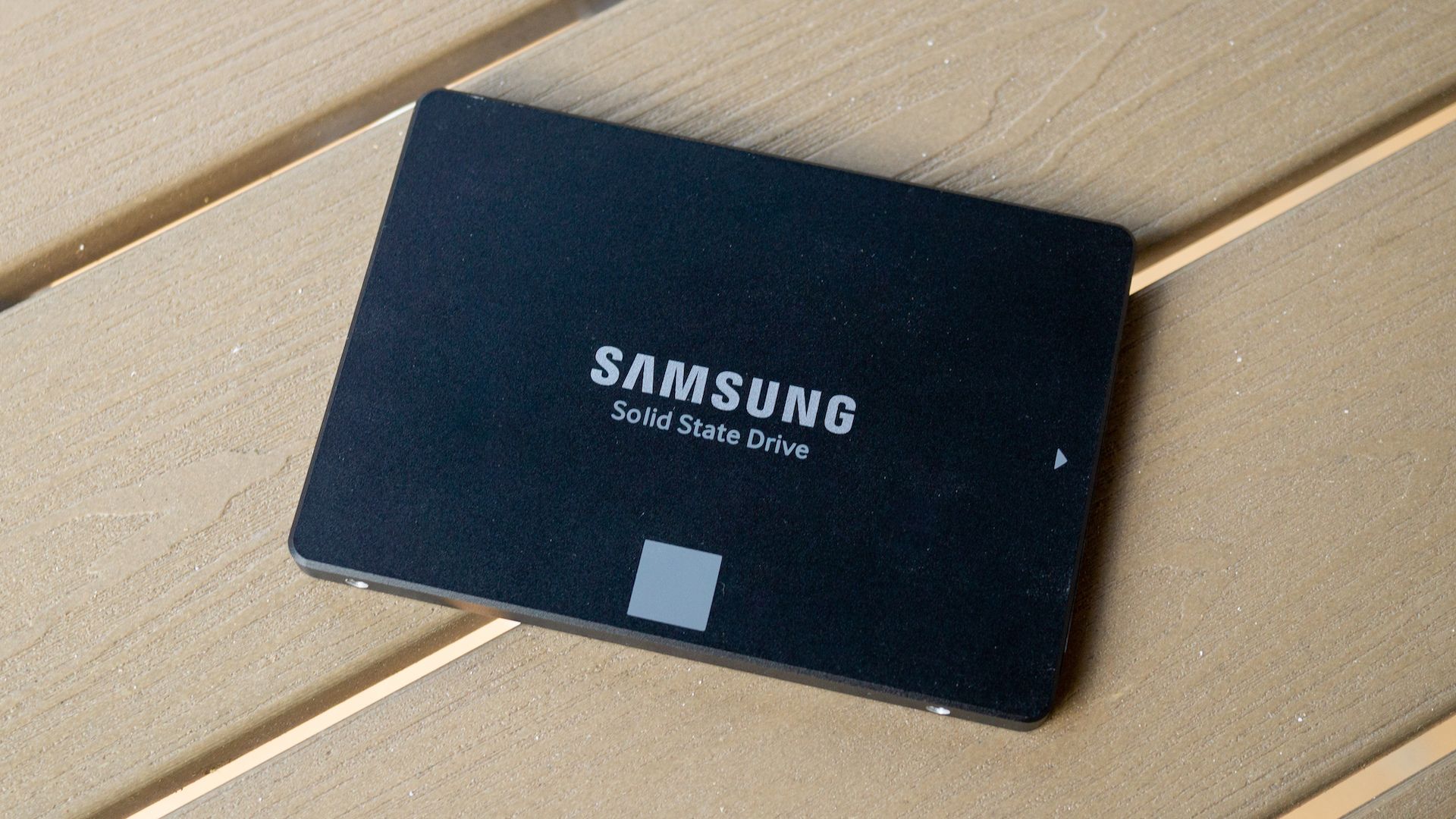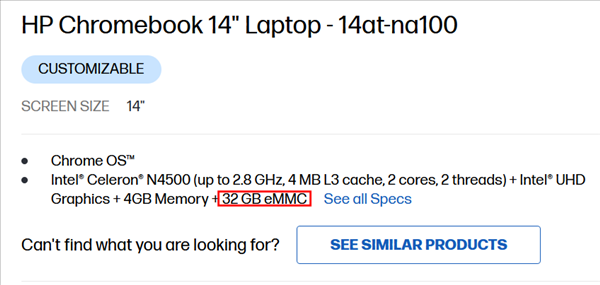Quick Links
Key Takeaways
Solid State Drives (SSDs) --- especially NVMe SSDs --- are significantly faster than eMMC. However, eMMC storage is less expensive than an SSD, and is useful in devices that don't need blazing-fast read and write speeds.
Not all solid-state storage is as fast as an SSD. "eMMC" is the kind of flash storage you'll find in cheap tablets and laptops. It's slower and cheaper than a traditional SSD you'd find in more expensive computers.
eMMC storage has a lot in common with SD cards. It's all flash memory, but --- just as an SD card wouldn't be as fast as a speedy solid-state drive --- eMMC storage can't compete with an SSD, either.
USB Sticks and SD Cards Also Contain Flash Memory, But...
Flash memory---typically NAND flash memory---is found in USB flash drives and all the different types of SD cards you might buy. USB flash drives contain a flash memory chip on a printed circuit board (PCB), as well as a basic controller and a USB interface. SD cards contain a flash memory chip on a circuit board, along with an SD controller. Both SD cards and flash drives are pretty simple, since they're generally designed to be as cheap as possible. They don't have the sophisticated firmware or other advanced features you'd find in an SSD.
There are a number of different "speed classes" of SD cards---and the slow ones are very slow. While it might be possible to install your operating system on an SD card, it would be a pretty bad idea. They are considerably slower than even the slowest SSDs.
Solid-State Drives Are More Sophisticated
A solid-state drive isn't just the same components you'd find crammed into a flash drive or SD card. They have the same type of NAND flash memory chips, sure---but there are considerably more NAND chips in an SSD and they tend to be faster, better-quality chips.
SSDs also contain a controller with firmware that provides more advanced features. For example, an SSD controller spreads read and write operations over all the memory chips in the SSD, so it's not limited by the speed of an individual chip as much. The controller works almost like a RAID configuration---it uses multiple chips in parallel to speed things up. When you write to an SSD, the drive might actually be writing to twenty different NAND flash chips at once, whereas writing to an SD card with a single chip might take twenty times as long.
The SSD's firmware also performs wear-leveling operations to ensure that data you write to the drive is spread across the physical drive evenly to prevent the flash memory from wearing out. The controller presents the memory to the computer in a consistent order so the computer behaves normally, but the drive is shuffling things around in the background. SSDs also support advanced features like TRIM to speed things up. There's no real need for an "SSD optimization" utility because the SSD's firmware is automatically optimizing the drive, shuffling data around for better performance.
An SSD is also typically connected to the computer using a SATA 3, mSATA, SATA Express, or NVMe (PCIe), which are much faster than the interfaces available to a common flash drive or SD card. How much faster varies, but NVMe SSDs are typically connected to a PCIe x4 slot. That means they can easily hit transfer speeds of several gigabytes per second.
What Is eMMC Storage?
A MultiMediaCard (MMC) is similar to an SD card. The SD card standard was considered an improvement over MMC and largely supplanted it in new devices. These days, almost all devices will favor an SD card slot over an MMC slot. The embedded MMC (eMMC) specification, however, continues to be developed and worked on.
An eMMC drive isn't a sophisticated internal drive with speeds and features on par with an SSD. Instead, it's basically an MMC that's embedded onto a device's motherboard. Like SD cards, MMC cards and their interfaces are much slower than an SSD. It gives manufacturers a way to provide cheap internal storage. The eMMC device also has a controller that makes the eMMC bootable so it can be used as a system drive inside cheap Android, Windows, and Chrome OS tablets and laptops.
However, eMMC doesn't have the firmware, multiple flash memory chips, high-quality hardware, and fast interface that makes an SSD so fast. Just as SD cards are much slower than internal SSDs, eMMC storage is much slower than a more sophisticated SSD.
You'll often find eMMC used in portable electronic devices like cell phones and digital cameras. With a push toward super-cheap $99 tablets and $199 laptops (especially Chromebooks) that need solid-state storage and not mechanical drives, cheap tablets, and laptops are also being built with eMMC drives. You'll typically see whether a device comes with an eMMC drive in its specifications. If the device is super-cheap, it probably has an eMMC instead of an SSD.
How Fast Is eMMC?
As with SD cards, not all eMMC storage is created equal --- some eMMC storage is slower than others. The latest eMMC standard (eMMC 5.1) supports read speeds up to 250 megabytes per second, and write speeds up to 125 megabytes per second. Compare that to a SATA SSD, which can reach speeds of up to 600 megabytes per second, or NVMe SSDs, which can reach speeds up to 10 gigabytes per second over the PCIe 5.0 interface.
You might look at those numbers and conclude that eMMC is awful, but that is a bit of an oversimplification. Not every device needs to be able to read and write at several gigabytes a second. There's nothing wrong with eMMC if it is used appropriately. A basic point-and-shoot digital camera probably doesn't need a full SSD with its increased size, complexity, and price.
When comparing performance, you should look up storage benchmarks for the eMMC-based device in question --- some devices are faster than others. Advances in hardware and new eMMC standards are making eMMC faster. However, if you're a serious laptop user, you probably don't want to be stuck with eMMC-based storage underlying your laptop --- even if it would save you some money.




